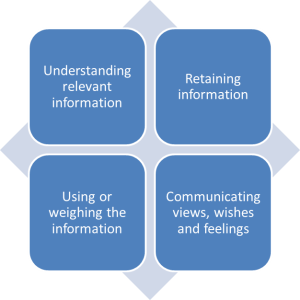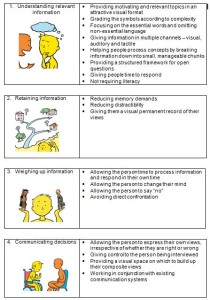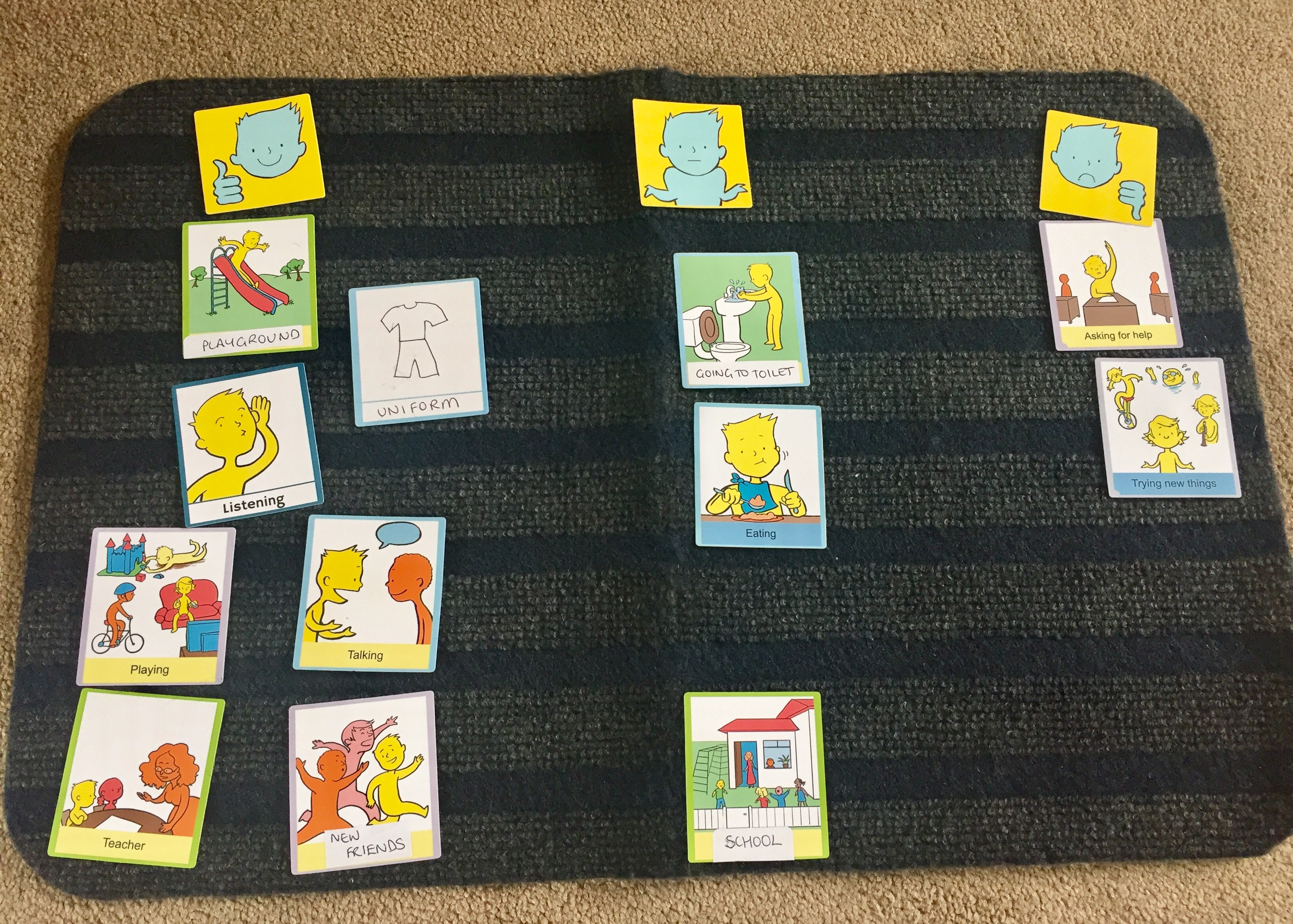We have recently revised and updated our on-line Talking Mats foundation course . It now runs over 6 weeks and is designed to take an average of 12 hours of your time. Participants can go at the pace that suits them so for example in the last course one person completed in 2 weeks and another used the full 6 weeks .
The feedback has been really positive about lots of different aspect of this way of learning and included comments about
The structure of the course
‘It has been very well laid out, all modules flowed well together. There was a clear progression to build up our skills and the tutor offered really constructive feedback’
‘ ‘It was good to be able to do it in my own time – my work schedule became more hectic than I had anticipated but I was able to still do it in the evenings and weekends
’ The website was easy to use and useful to have the forum and see all the different uses of talking mats. This has inspired me to use the tool outwith work and within the voluntary sector.’
‘When I could not access my laptop I could access on my phone ‘
Knowledge and application of Talking Mats
‘This course has strengthened my knowledge about who, when and how to involve Talking Mats in my work’
‘Talking Mats has already allowed me to find out more about my clients’ needs.’
‘Using Talking Mats has resulted in enabling my client to explain her fears and has encouraged her to come into and access the dental department’
‘I have never experienced this kind of outcome before with a person , who has got severe comprehension and cognitive problems (Circle 2). I noticed, that doing the concrete submats made her more able to follow me in conversations talking about issues in circle 3, By handing over the control to the thinker, it is wonderful to be able to balance, and empower the conversation. That gives me satisfaction and joy.’
I’ve found the experience of actually using Talking Mats in practice immensely satisfying,. Each time it’s surprised me how engaged the thinker appears to become, and how readily their voice comes through when it has the space and time to do so’
‘ I wouldn’t hesitate now in using Talking Mats , even with people who have strong verbal skills if I felt it could be a useful way of getting them to focus on and think around a particular topic.’
Wider reflection on personal communication
‘My communication skills have benefited – this course has really encouraged me to think about phrasing, question types, clarity etc.’
‘It has led me to reflect on how complicated some of the things I ask of people are.’
‘I can evaluate whether communication is effective and how I can improve this.’
So if you want a course that you can do without travel and that enables you to
- Understand the Talking Mats communication framework- in particular who to use it with and for what topics and questions
- Be able to use Talking Mats for a range of purposes within your setting.
- Gain confidence in using tool based on best practice interview techniques and which evidences your commitment to person centred working
- Have increased awareness of your own communication style particularly interacting with people with communication difficulties.
If this is you book on our next course starts the 5th Dec
Further reading Check out Natalie Leader blog about her experience of completing the course from Tasmania
Talking Mats is a useful tool to help parents see their child’s point of view.
The stage for each parent when their child also has an opinion about what is best for them can come as a surprise and is sometimes challenging. For parents of children with disabilities it can be even more so. This story is an example of how Talking Mats helped parents hear their own child’s voice amongst the background noise of the voices from health, education social and voluntary services.
David was in his final year of primary school. He attended a small village school and was transitioning to a large mainstream secondary. He has mobility problems due to cerebral palsy and uses a wheelchair. He can walk very short distances with effort using a walker and in his primary school used this method to move around the classroom and go to the hall for lunch and PE. This was a functional way to meet 2 of his targets : changing position and walking practise. His parents wanted this to continue when he transitioned to secondary school, although the health professionals involved felt it was going to be too difficult given the greater distances in the new building. An electric wheelchair was proposed for this new context. David’s parents were finding this next step challenging.
One of the professionals involved wanted to find out what David felt was important in his new school and used Talking Mats as a way of supporting him to think about various factors. The top scale used was ‘important/ not sure/ not important’.
David’s mat clearly showed that what was important to him in his new school was being with his friends. When his parents saw his mat they realised that this would be impossible if he was to move from class to class using his walker and it helped them make the transition to seeing him in an electric wheelchair. It also helped them see things from David’s point of view. They were more than happy to fit walking practise into a different part of his busy day because they had heard what was important to him.
Talking Mats allows different voices to be seen and heard.The name has been changed to protect identity.
Talking Mats and Autism- Have you sometimes tried it and it didn’t work?
There is a growing interest in teaching TM to people with ASD. We know that some important adaptations might be required to make this a meaningful experience, and are keen to share our learning so far.
Being asked for thoughts or views can be difficult for some people with communication difficulties. In particular, there is a group of people with autism where some of the core principles of Talking Mats have to be taught in stages. Some thinkers will just ‘get it’ and find it a valuable tool for sharing their thoughts and for supporting decision making. For others there may have to be adaptations and /or specific teaching e.g. the vocabulary of the top scale. We heard recently of a student in a specialist centre who couldn’t use Talking Mats. However the staff would include him in groups where it was used and make sure he was around others doing Mats. After a few years, he did learn the principles and go on to use it effectively.
We have gathered ideas and knowledge from practitioners working in the field of autism and included these on our web-site under Free Stuff on Communication Disability. ASD guidelines It’s important that these guidelines grow and adapt as we learn more about using TM with an even wider range of people.
We’ve arranged a twilight session here at Stirling on the 1st of February 2018 to bring together practitioners working in the field of autism to extend our knowledge and encourage a staged approach to effective use of Talking Mats.
We’re delighted that Ruth Chalmers, Principal Teacher for Autism Spectrum Info and Support Team (ASIST) in Fife will be joining us to talk about developing social communication skills using Talking Mats. There will be time for small group chat so bring along a case you want to discuss.
Please share the attached flier 201802 AsD seminar with your network and we hope you can join us
Please come along and If you are interested in attending this twilight session 4.00pm to 6.00 pm (cost £20.00), please notify us at info@talkingmats.com
It’s not necessary to use every symbol in each topic set to have a successful conversation. The Talking Mats symbol sets have a range of options, some concrete and some abstract (more difficult for some to understand) You don’t need to use every symbol in your set!
People have found the Work/Education set in the Health and Wellbeing resource useful around times of transition from senior school or when finishing college. It is also valuable as a tool to support a person’s thinking during the process of applying for jobs. The symbols support these 2 aspects of work and education and are taken from the WHO ICF section on Major life areas[1]. For more information here’s a link to an earlier blog about the ICF. http://www.talkingmats.com/whats-health-well-resource/
When asking someone to think about different kinds of work, suggested top scales are like/not like or important/not important. The choice is dependent on what you want to find out and what level of understanding the thinker has.
If the person is then pursuing options, there are different symbols to cover the aspects involved in this. e.g. application and interview. A different top scale managing /not managing ensures useful information is gained.
Each topic set can be broken down into what matters to that person at that moment in time, and using different top scales results in getting different information.
This set is available to purchase in both digital form and symbol cards www.talkingmats.com
[1] ICF International Classification of Functioning, Disability and Health –World Health Organization p164-167
This story, which highlights the importance of finding out what really matters to people, was shared by one of the staff attending the second day of an enhanced Talking Mats training course. She works in a NHS facility for people assessed as needing hospital-based continuing care.
I was working with Bill (not his real name) who is a man with severe cognitive impairment resulting from a head injury and stroke. He was very angry and agitated and we couldn’t work out what was wrong. At times he was physically aggressive when we couldn’t understand him.
One day he drew a picture of a rabbit and was very insistent about it but we didn’t know what it meant. We contacted his sister about him being angry about a rabbit. She asked around to other family members and friends but no one could think what it meant.
Bill continued to draw a rabbit and then other pictures including money and TV so I made an improvised Talking Mat using his drawings as the options and began trying to find out what really mattered to him. I gradually connected that the TV was about about programme called Dickinson’s Real Deal (a TV programme about antiques) and that in the past Bill had had an ornament of a rabbit which he thought was worth a lot of money.
We phoned his sister again about a possible rabbit ornament and she then remembered that he had collected figurines in the past. She finally discovered the rabbit in her garage.
Once we were able to reassure Bill that his rabbit was safe his frustration lessened,he was much less angry and became more settled.
This lovely story shows us how important it is to never assume that someone is just ‘being difficult’ but that if we can try to find out what really matters to them we can make a huge difference to their lives and ours.
This is the second in a two part discussion on decision making and determining capacity, this time looking at how Talking Mats can help. Click here for the previous blog
Where Talking Mats comes into play is by allowing people to consider each option around a decision and then make their decision when they place the symbol under the appropriate top scale. We have found that many people, who would otherwise be judged not to have capacity, can show that they can indeed understand and express their views so that they can be acted upon. Equally our work so far indicates that if someone cannot use Talking Mats this may be an indication that they do not have capacity for that particular decision.
Talking Mats supports the four criteria which are required in determining mental capacity. The table below lists some of the elements which Talking Mats provides to support each of the 4 criteria.
(Click on the image to enlarge)
Are these 4 criteria applicable and helpful in your setting?
Thanks to Natalie Leader, one of our Accredited Trainers from Hobart, Australia for this blog reflecting on her experience of doing the online Foundation training.
The beauty of online training is that no matter where you are or what time zone you’re in, there are options. This is really brought to bear when living in a rural or remote area, such as here in Southern Tasmania.No matter how much those of us here in beautiful Tassie brag about what an awesome place it is to visit, there are limits as to which training organisations will provide professional development sessions here, and how often.
I missed an opportunity to attend Talking Mats Foundation training by a few months so registered to do the online training instead.
My experience with the Talking Mats online training platform was that the organisers were responsive and positive, and the content offered variety, with steady monitoring of progress. Amongst the easy navigation and helpful resources you also participate in discussion forums. As one who doesn’t often participate on line, I found them encouraging and helpful, It was also interesting to read people’s descriptions of different ways that Talking Mats can be used.
Doing the modules in sequence (and with some time in between) worked well for me, as I reflected more deeply on the role of the listener and the qualities I needed to foster in my practice, such as observation, pacing and neutrality.Fostering those qualities and being guided by principles such as self-determination is now an ongoing goal for me.
I have now introduced Talking Mats into my practice and have taken the next step of becoming an Accredited Trainer.
Becoming an accredited trainer involved attending a 2-day workshop in Melbourne for face-to-face training and assessment from Lois and Nicki from Talking Mats Ltd, Stirling, Scotland. As if having excellent trainers was not enough, there was the added bonus of a roomful of like-minded practitioners, all sharing their skills and experiences with Talking Mats. Because each person’s work setting was unique, our group had a rich and diverse array of perspectives on implementation of Talking Mats training and techniques.
So, now I’m making preparations for delivering my first training workshop, sharing Talking Mats with my colleagues. I actually don’t have the jitters (except regarding the IT!) And, I’m confident that Talking Mats will speak for itself. Perhaps I may have appeased the IT deities by taking a giant leap from my former self and participating in a blog, so that side of things will run smoothly!
Good luck with the training Natalie!
This month we have online course participants from Singapore, Canada, Ireland and the UK. Register now for our next online training starting on the 5th of September.
Laura’s 4 year old twin boys are just about to start school and she was finding it difficult to have a proper chat with them about how they are feeling. She wanted to think about how best to help them prepare for the transition from nursery so used Talking Mats.
We have done lots of ‘practice mats’ over the past few months – focusing on topics such as ‘food’, ‘animals, and ‘toys/games’, so I knew that the boys were both familiar with Talking Mats before I introduced the more emotive topic of ‘School’.
P was first to have a go at being a ‘Thinker’, with me as the ‘Listener’. We used the Top Scale ‘Happy about/ Not Sure/ Not Happy About’. P thought very hard about placing each option. It helped to have the pictures and mat to focus on rather than just me firing questions at him.
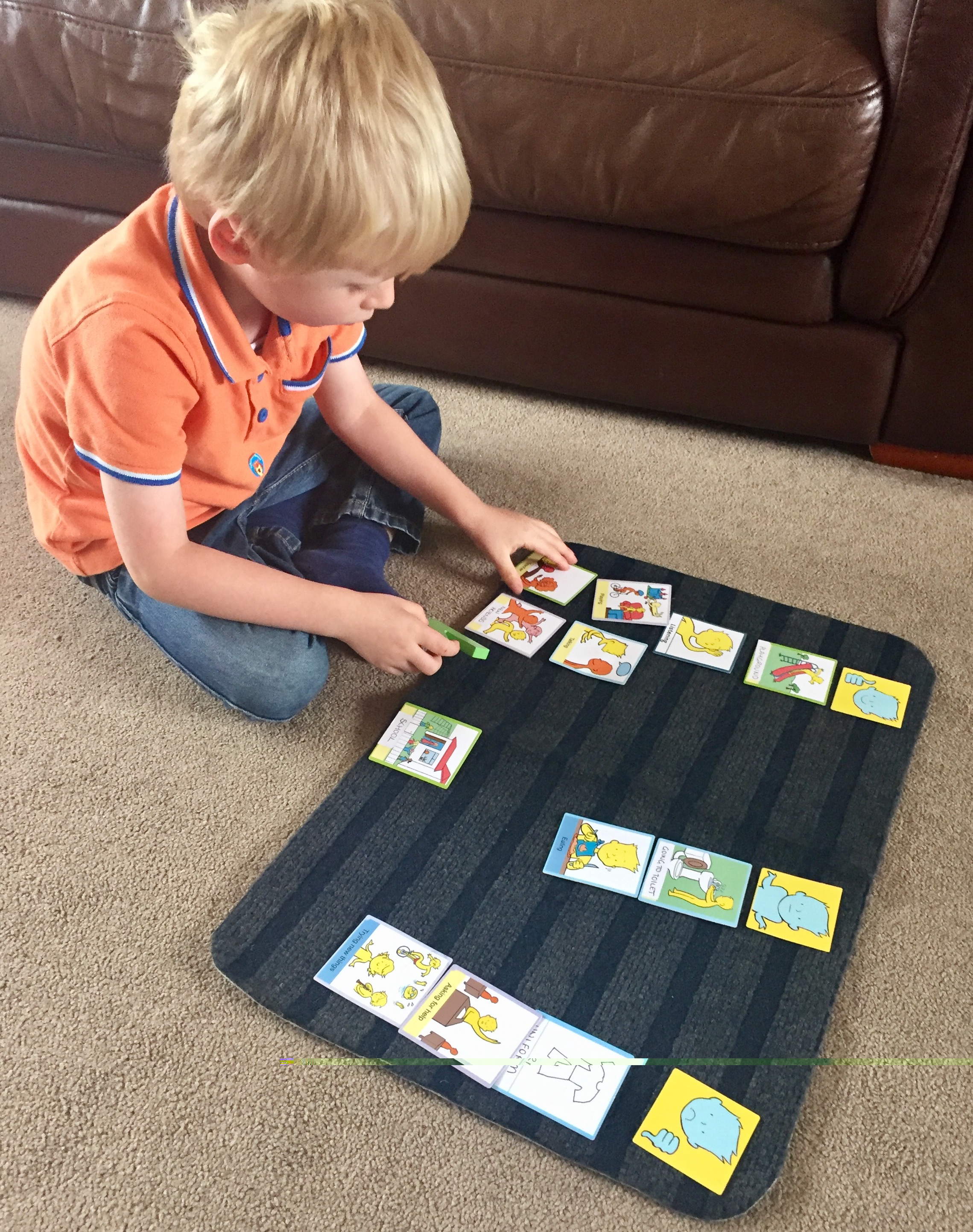
P’s finished mat gives us a clear indication of his feelings about school. The ‘check and change’ stage was very useful as P changed his mind about ‘uniform’ which he had originally placed under ‘Not Happy About’ – he said that actually he is happy because he will look smart in his new uniform!
The Talking Mats Keeping Safe Learning Disability projects ends but a resource that promotes safeguarding and well-being continues.
The Keeping Safe Talking Mat provides a structured framework to ask someone ’How’s your life going? We are grateful to the Scottish Government Keys to Life monies for funding the trials. Impact of use of the resource was gained by practitioners sending in examples of their use of Keeping Safe, and the outcomes and actions from the Mats were themed.
The resource has been shown as a helpful way to
- discuss new information (89%). Staff frequently commented that using the Mats revealed things they had not known previously.
- discuss and resolve fears (84%) . It provided a framework that was supportive for those more difficult and or sensitive conversations e.g.’ Usually when she expresses her feelings she can get either upset or angry. She did not get upset or angry at any point through doing the Talking Mats, although the subject and things she was saying was at times difficult issues.’
- support thinking (89%) ‘It helps with memory and attention as she has something visual to keep her focused.’
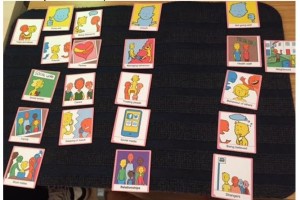
Initially many staff thought using the resource would take too much time but in fact were really surprised to find how much quality information they got in a short space of time. A cost benefit analysis demonstrated that using the Keeping Safe resource is cost effective for organisations i.e. for every £1.00 an organisation spends on the training and the resource, the potential financial benefit to the organisation is £23.00. We believe this is because the Mats create a powerful listening space and so that issues can be addressed timeously and not spiral out of control. This has not only a financial benefit but also a return in terms of an individual’s well-being and access to local non specialist services.
Although this resource was developed with adults with a learning disability, several people have reported that they have found it useful with other client groups e.g. adults with acquired neurological disorders and young people particularly with mental health issues .
If you want to read in more detail about the design process behind the resource then please read this journal article published in the Tizard Learning Disability Review More Than Pictures TLDR 2017
When considering someone’s mental capacity its is important to bear in mind that the right to self-determination is enshrined in law.
In 1948 Eleanor Roosevelt, as the chair of the United Nations Human Rights Commission, was the driving force in creating the Universal Declaration of Human Rights Act (1948).
Since 1948 there have been laws passed in many countries stating that people with communication disabilities should have equal rights, including and specifically in the complex area of mental capacity. In the United States the Federal Law that covers this is the Americans with Disabilities Act of 1990 . In the UK the key Acts of Parliament are the Mental Capacity Act (2005) England and Wales and the Adults with Incapacity Scotland Act (2000).
The UK Acts specifically focus on mental capacity and say that every adult has the right to make decisions unless proved otherwise and that each individual has a different capacity to make decisions about different aspects of their life. In addition they state that we must assume that someone has Capacity unless it is established that the person has substantial difficulty in one or more of the following criteria in the following diagram.
There are a number of important expectations behind these Acts which are particularly significant for people with communication difficulties.
- Everyone should be supported to make their own decisions (including Augmentative and Alternative Communication methods)
- Adults should be encouraged to make use of their skills and to learn new ones where that would be helpful
- Information to support understanding needs to be given in a way that is appropriate to his/her circumstances (using simple language, visual aids or any other means).
- People are entitled to make their decision – this is not about what we think is good or bad
- Judgements on capacity:
- cannot be based on age, behaviour or disability
- need to be made decision by decision – (so not being able to make more complicated decisions does not apply to all decisions)
- cannot be based on past experience of decisions – they need to focused on the here and now
- must take into account the adults socio-cultural circumstances wherever relevant
- where a person is able to retain the information relevant to a decision for a short period only, this should not prevent him or her from being regarded as able to make the decision
- If someone is judged to lack capacity then decisions must be in their best interest and any measures taken on their behalf are to be the least restrictive to the person
- It is important to assess people when they are in the best state to make the decision
Please let us know how you deal with self-determination and capacity issues where you work.
In a future post I will explain how Talking Mats can help support decision making and the identification of Capacity.
 Online training login
Online training login 

